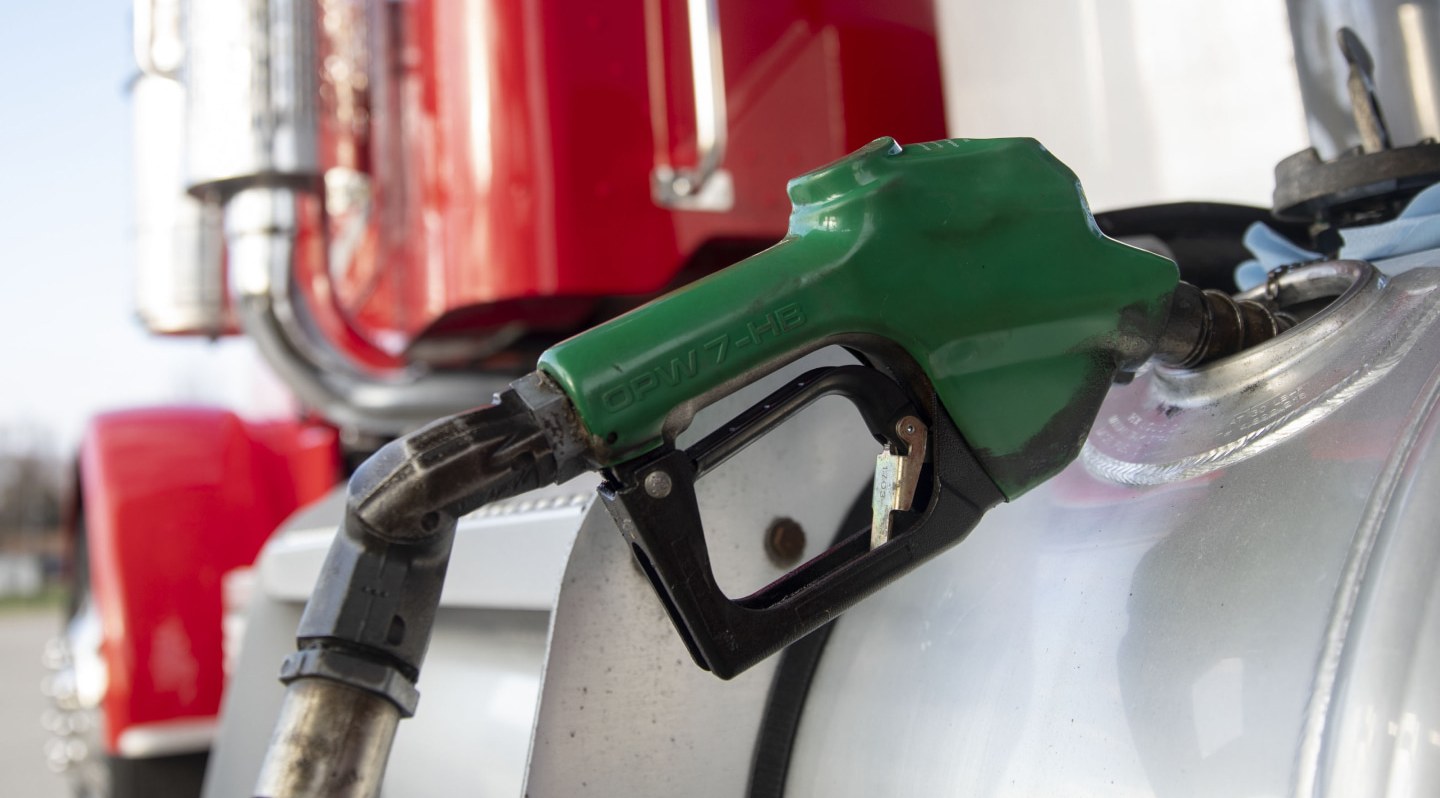Remember when diesel prices dipped to just $2.55 a gallon in 2020? Since then, prices have more than doubled to 40-year highs. No one is safe from high prices, not even the oil and gas companies that supply fuel to commercial fleets.
Meanwhile, constantly fluctuating fuel prices make it tough to accurately project the full hit to your bottom line.
While you can’t predict fuel prices, a fleet management solution can help you take proactive steps to use less fuel. These actions can ease some of the financial burden while improving overall efficiency.
Limit fuel consumption by cutting idling and wear and tear
Telematics data can give you the information you need to start making changes that can reduce excess fuel consumption and costly wear and tear.
Many fleets find that reducing idling is a great start. After all, an idling vehicle can burn 0.8 gallons of fuel per hour. Since the average heavy-duty truck idles about 1,800 hours each year, those costs add up. Especially now.
Telematics data can track how much time each driver spends idling, then calculate the amount of wasted fuel. Some fleets use this information as part of their fleet management to create incentive programs that reward drivers who reduce their idle time.
You can also use data to optimize how you use your vehicles. For example, better route optimization can avoid traffic congestion or reduce overall trips and mileage.
Dispatchers can use Motive’s Fleet View to quickly identify all available vehicles, drivers, and assets near a location, with estimated travel time and distance. Better yet, dispatchers can also see each driver’s hours of service (HOS) details to ensure that the trip can be completed compliantly.
As Kari Gib, Senior Operations Manager for Utah’s Trade Star LLC discovered, Motive also incorporates the HOS rules and exemptions specific to fleets hauling oil. “Even if my drivers are not 100% familiar with the HOS rules, Motive is,” she says.
Overall, more efficient dispatch and routing leads to less waiting, lower fuel consumption, reduced wear and tear, and fewer compliance issues.
Optimize fuel usage with more efficient driving
The Fuel Hub, part of Motive’s fleet management solution, measures your fleet’s fuel consumption and identifies your top- and under-performing drivers and vehicles. With that information, you can coach your drivers to build better fuel consumption habits.
For example, the U.S. Department of Energy finds that driving more efficiently can improve fuel economy by 30% at highway speeds and up to 40% in traffic. That’s because speeding and hard acceleration use more fuel than more measured driving. In fact, speeding can increase fuel use by 5% to 28%.
However, many drivers aren’t even aware that they’ve developed bad habits. Once you point them out, you can work with your drivers to slow down, accelerate more gently, or avoid close following. Beyond fuel consumption, these changes can also improve safety.
Usher Transport, a Kentucky-based hauler, reduced accidents by 32% after switching to Motive. Beau Mosley, EVP of Safety and HR at Usher Transport, explains, “Motive empowers us to objectively identify risk and change behavior on the front end, rather than the back end.”
Benchmark performance to identify areas ripe for improvement
It can be hard to know how your fleet stacks up in terms of fuel consumption and efficiency. Are you already doing well, or do you have room for improvement? Which changes will make a difference?
That’s where a fleet management solution like Motive can help. When you compare your fuel usage against the averages reported by fleets using Motive, you can gauge which improvements might have the biggest impact.
Motive Fuel Hub gives you a consolidated view of your fleet’s fuel trends, benchmarked across our entire network of vehicles. Increased visibility can tell you where every gallon of fuel is going and how you stack up against the average. Motive Fuel Hub also helps you identify which drivers are your top performers and which ones need coaching. That knowledge has helped Motive customers save up to 13% on fuel by reducing idling and harsh driving behaviors.
When we spent two years studying how 820 fleets used Fuel Hub, the top-performing fleets reduced idling time by 20% and cut hard accelerations by 79%.
Since you can’t control fuel costs, strive to make changes that can improve your fleet’s fuel efficiency. When you choose the Motive fleet management solution, you can save fuel while cultivating a safer, more efficient fleet that improves your bottom line in unexpected ways. Get in touch to start improving your own fleet’s efficiency.




